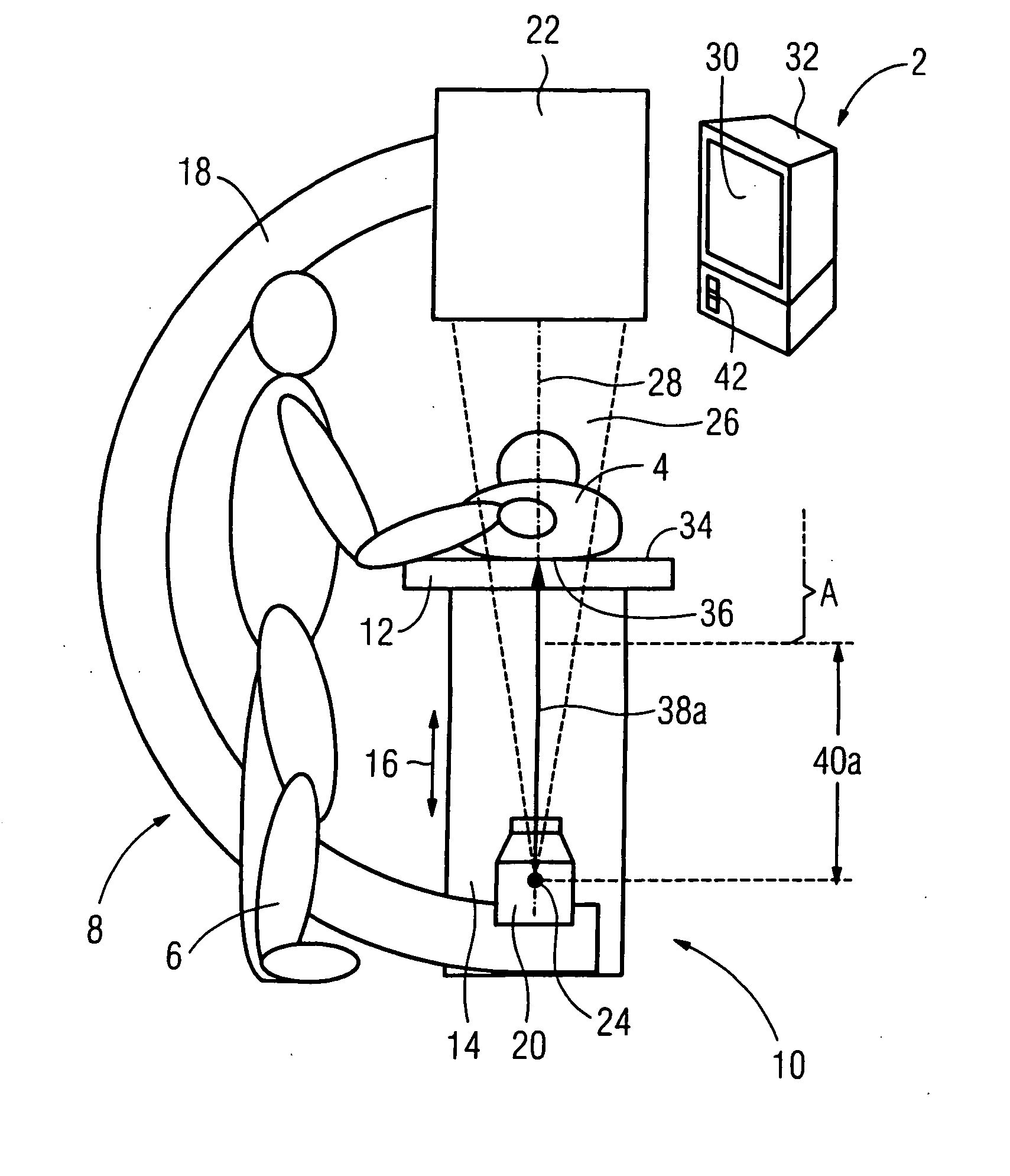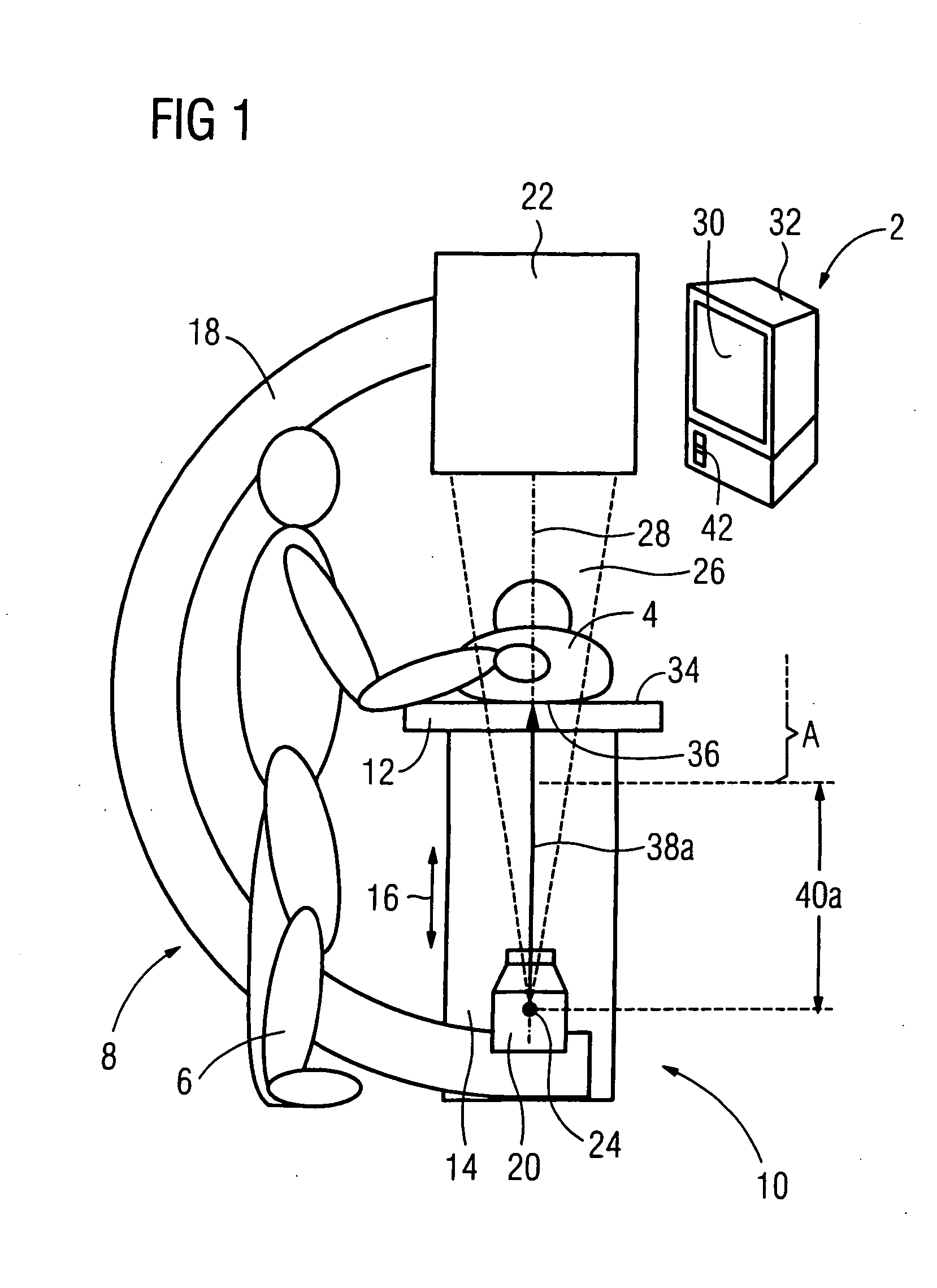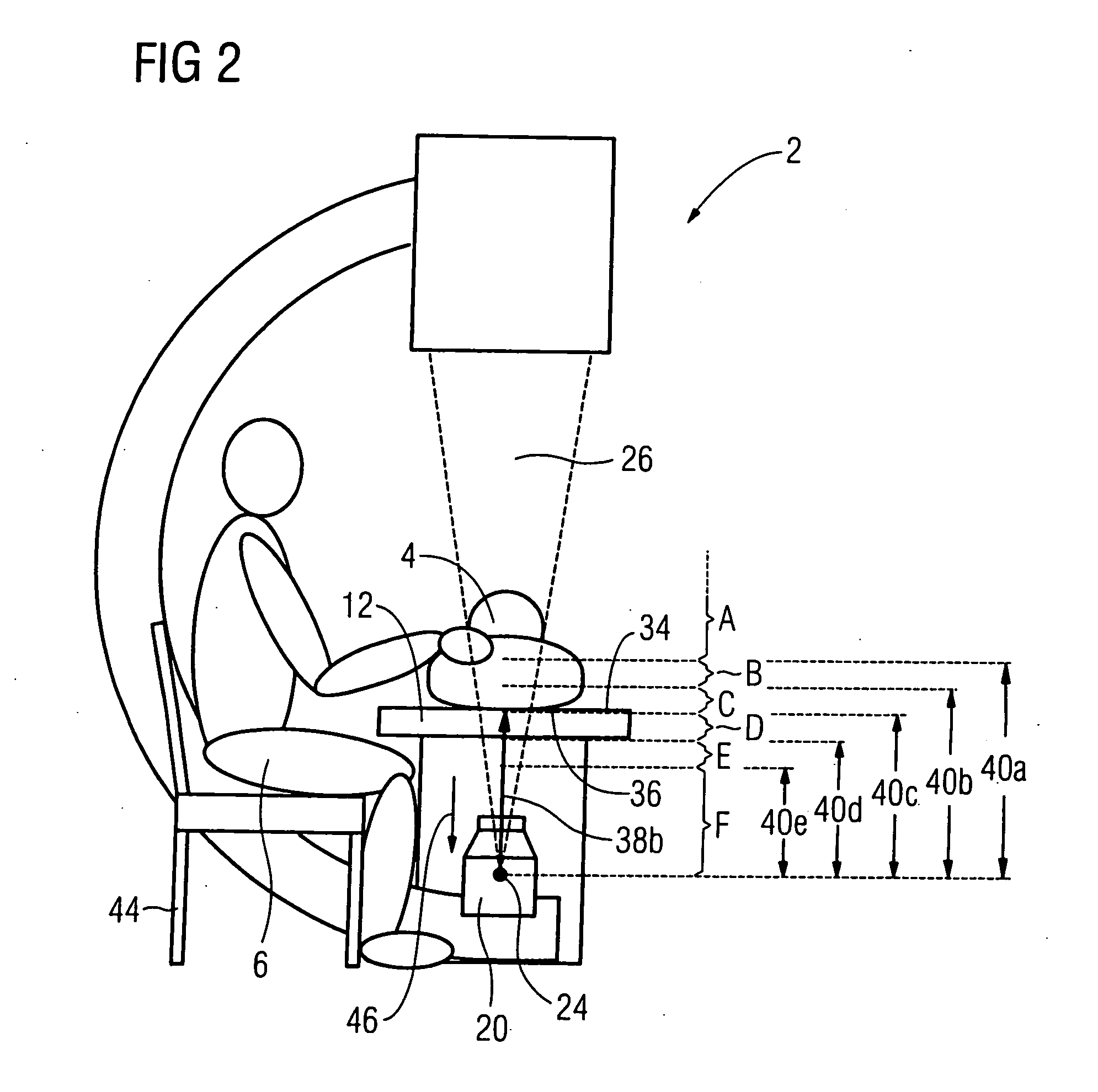Method and x-ray apparatus for exposure of a patient who can be placed at a variable distance relative to an x-ray source
a patient and variable distance technology, applied in the field of method and an x-ray apparatus for radiation exposure of a patient, can solve the problems of unacceptably high dose rate of ionizing radiation, unacceptably high entrance dose rate of patient, and patient lying on the table being irradiated with unacceptably high dose ra
- Summary
- Abstract
- Description
- Claims
- Application Information
AI Technical Summary
Benefits of technology
Problems solved by technology
Method used
Image
Examples
Embodiment Construction
[0041]FIG. 1 shows a urological workstation 2 with a patient 4 and a doctor 6. The workstation 2 has an x-ray C-arm unit 8 and a patient table 10 with a table plate 12 on which the patient 4 lies. The table plate 12 is supported on a base 14 such that it can be adjusted in terms of height in the direction of the double arrow 16. The height adjustment ensues by actuation of a control (operating) lever 42 in a manner that is not necessary to explain in detail.
[0042] The x-ray C-arm unit 8 has a C-shaped supporting arm 18 at the ends of which an x-ray source 20 and an x-ray image intensifier 22 are mounted, respectively. In the x-ray source 20 (more precisely, the x-ray tube contained therein and not shown), x-ray radiation 26 (represented in FIG. 1 by a beam cone) is emitted from the focus 24 along a central ray 28 toward the x-ray image intensifier 22. The x-ray radiation 26 penetrates the patient 4 in order to generate an x-ray image 30 of the inside of the body in a known manner, ...
PUM
 Login to View More
Login to View More Abstract
Description
Claims
Application Information
 Login to View More
Login to View More - Generate Ideas
- Intellectual Property
- Life Sciences
- Materials
- Tech Scout
- Unparalleled Data Quality
- Higher Quality Content
- 60% Fewer Hallucinations
Browse by: Latest US Patents, China's latest patents, Technical Efficacy Thesaurus, Application Domain, Technology Topic, Popular Technical Reports.
© 2025 PatSnap. All rights reserved.Legal|Privacy policy|Modern Slavery Act Transparency Statement|Sitemap|About US| Contact US: help@patsnap.com



